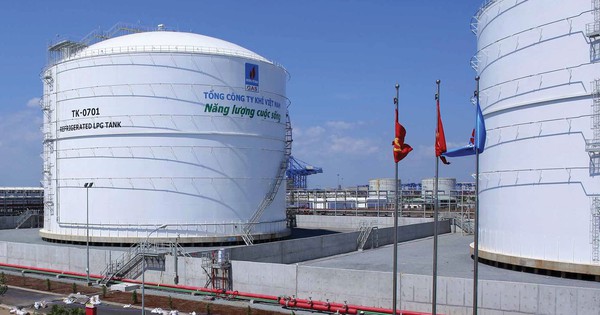Liquefied natural gas power attracts investors
Liquefied natural gas power remains an important part of Vietnam's energy transition story. Investors continuously show a strong interest in this sector.

According to the latest draft of the National Power Development Plan for the period 2021-2030, with a vision to 2045 (Power Master Plan VIII), thermal power using domestically produced gas (including gas turbine power plants) and liquefied natural gas (LNG) - excluding flexible gas turbine power sources using LNG - by 2030 have a total installed capacity of about 29,700-38,800 MW, accounting for 24-29% of total electricity production. nation.
By 2045, the total installed LNG capacity will be about 43,300-46,300 MW, producing 233.6-246 billion kWh and accounting for 20-24% of total electricity output.
That policy trend has been demonstrated by Vietnam's statement at the 26th Conference of the Parties to the United Nations Framework Convention on Climate Change (COP26) in November 2021 on target setting. net zero emissions by 2050. In which, LNG is considered as a potential solution to reduce greenhouse gas emissions, while helping to mobilize and attract resources of foreign and domestic investors
At the Vietnam Business Forum (VBF) earlier this year, the American Chamber of Commerce (AmCham) emphasized that gas can act as an important conversion fuel and help Vietnam build a bridge towards the future. clean energy. The transition will take time, and in the near future, the development of offshore gas-to-electricity projects and others has the potential to bring both economic and environmental benefits.
According to representatives of businesses and associations at VBF, correct decision-making and new technologies with a mixture of gas and renewable energy can help Vietnam address growing environmental concerns. and avoid many of the environmental problems that countries like the United States and China have experienced.
A number of transactions have already been carried out in this area. At a meeting between AES Corporation (USA) and Vietnam Gas Corporation (PV Gas) late last year, Mr. Bernerd Da Santos, Executive Vice President and General Director of AES said, the signing of the agreement The joint venture to develop the Son My LNG Terminal Project between AES and PetroVietnam is "an important milestone for the development of Vietnam's LNG energy source", and also makes an important contribution to reducing emissions in Vietnam according to committed at COP26.
AES Corporation has maintained its commitment to Vietnam's economic and social growth by investing in reliable and sustainable energy solutions, such as the development of the Son My gas turbine power plant. 2 (total capacity of 2.2 GW, total investment capital of 1.9 billion USD) and joint venture of Son My LNG Terminal (capacity of 3.6 million tons/year, total investment capital of 1.31 billion USD) in Binh Thuan Province.
Vietnam has nearly 20 LNG thermal power plants being deployed nationwide, including the 3,200 MW Bac Lieu LNG Gas Thermal Power Plant Project by Delta Offshore Energy and Quang Ninh LNG by PV Power, Colavi, Tokyo Gas, ExxonMobil, and ExxonMobil. implementation implementation. However, some of these initiatives have yet to specify a fuel source.
Although Vietnam has set a target to start importing LNG this year, it still lacks supporting infrastructure. Therefore, investors entering this sector may need to invest in all stages of the LNG chain and ensure the smooth operation of their projects. This will entail complex and lengthy regulatory approval processes involving each component of the chain.
According to PV Gas, in 2021, the Corporation has signed eight master purchase agreements with suppliers from the Americas, Europe, Australia, the Middle East, and Asia-Pacific and is continuing to negotiate. negotiate, agree and sign agreements with many other LNG suppliers in the world. The diversification of suppliers gives PV Gas the advantage of having many supply choices with competitive prices and quality.
Strong demand, weak domestic production and supportive policies mean that Asia will account for 95% of global LNG demand growth from 2020 to the end of 2022. Meanwhile, Asia is the top destination. for U.S. LNG projects since the country began shipping in 2016.